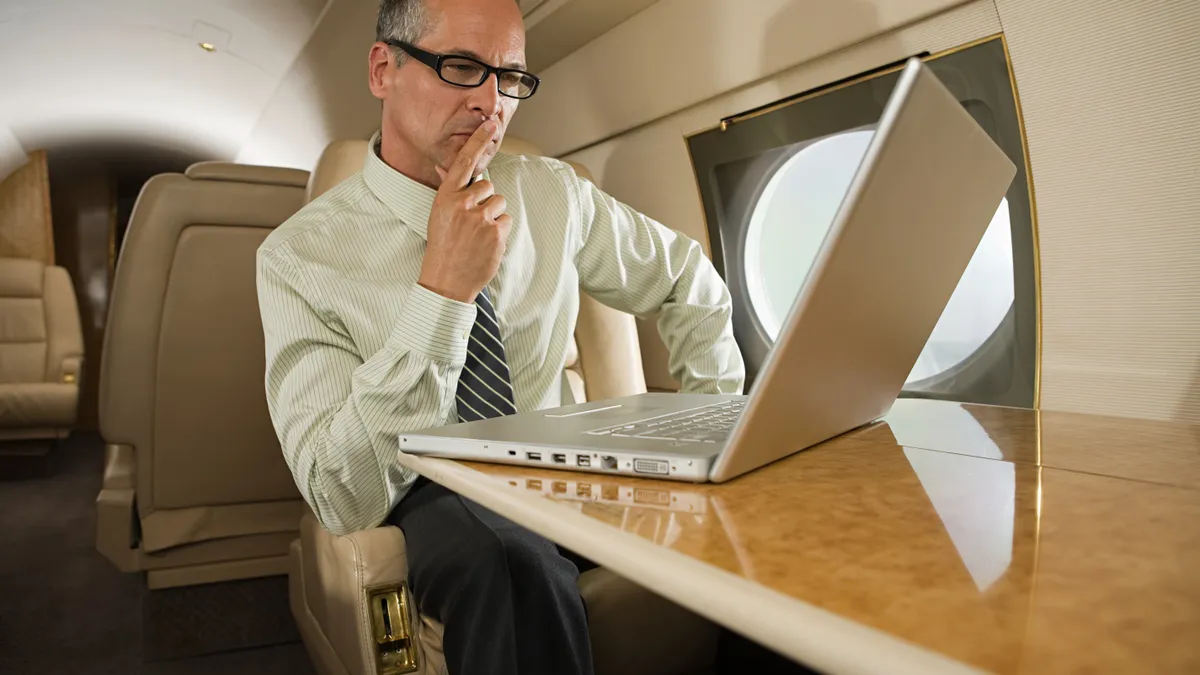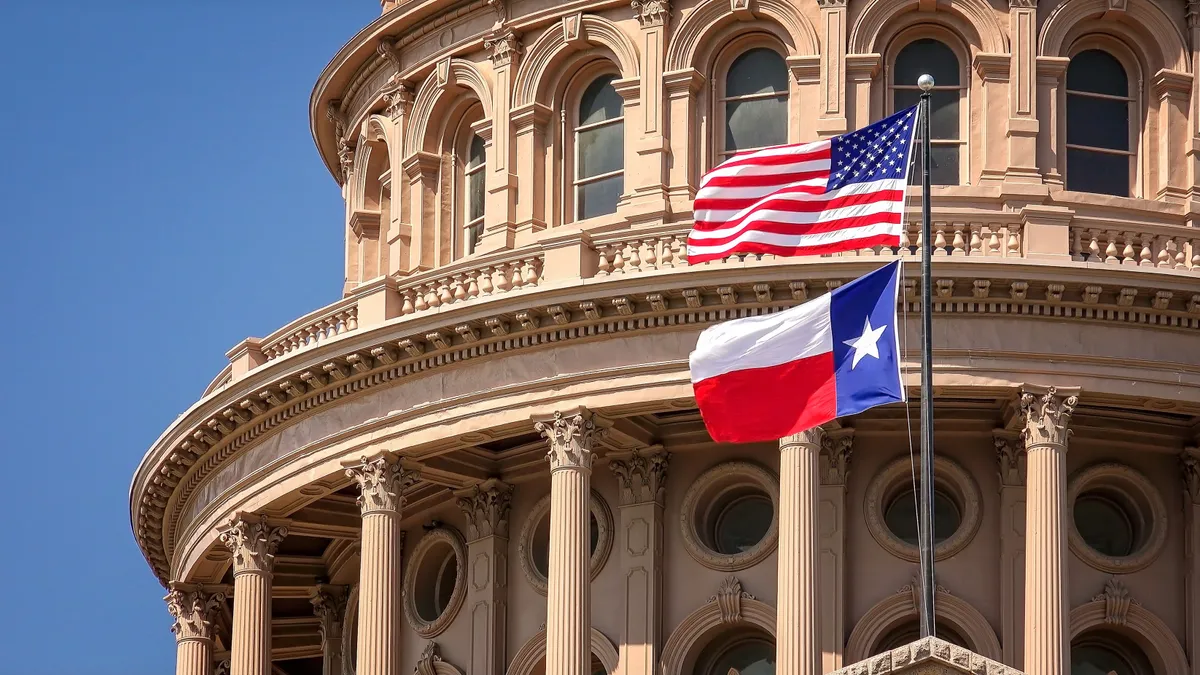The tax law changes from four years ago that helped lead to a boom in private jet demand starts to phase out after this year, making 2022 the last chance for companies to get 100% bonus depreciation for their jet purchase. But while the advantages of jet ownership included in the Tax Cuts & Jobs Act of 2017 are real and can be quite good, the way you manage your purchase is key to the extent you can optimize the tax advantages, says a tax specialist.
“There’s a lot of chatter and misunderstanding out there about business use of an aircraft and a lot of businesses will automatically think they’ll be entitled to a 100% write-off of the airplane in the year it’s acquired,” Mary Duffy, managing director in the U.S. national tax office of Andersen, said in an interview. “But they may be in for an unwelcome surprise.”
Without a doubt, TCJA has created a boom in private jet ownership. At the end of last year, use of private jets was up 60% year-over-year, to about half a million flights, according to data reported by The Wall Street Journal.
In the fourth quarter of 2020, there were more than 1,200 new and pre-owned purchase transactions valued at $10.4 billion in the United States, the largest quarter since 2015, according to Global Jet Capital. In 2021, demand for jets was so high buyers could expect to wait at least a year for a new plane.
“Aircraft manufacturers will just laugh if a buyer requests a new plane to be delivered within the next six months and the used market has been picked clean,” Flexjet Chairman Kenn Ricci is reported telling Bloomberg.
Tax incentive
One of the key provisions driving that demand is the 100% bonus depreciation of the price in the year of the purchase, regardless of whether the plane is new or used. If the jet costs $11 million — about the average price for a new jet in 2021 — that’s how much a company can write off on its taxes in that one year.
But because the depreciation is applied on a pro rata basis, the benefit can potentially erode away each time the plane is used for a non-business purpose – that is, if a spouse or other guest is included in a trip, or a top executive wants to use the plane for a private purpose, even if it's part of a business trip.
“As you start to peel away the onion, there are usually other reasons that a company wants the plane, and inevitably it involves some idea of personal use,” said Duffy.
If a company officer or director used the plane for a personal entertainment purpose at the cost of, say, $100,000, which would include fuel, use of the crew and depreciation, among other things, the expenses are limited to the amount of imputed income that is applied to the executive. In other words, if the company imputed income of $10,000 for use of the plane, based on the Federal Aviation Administration’s standard industry fare level (SIFL) rate, $10,000 in additional income would be reported to the executive on their W-2 and the excess $90,000 operating cost above the amount of income imputed would be disallowed as a tax deduction.
“The company’s expenses of operating the aircraft of that flight were $100,000, but they imputed income of $10,000,” Duffy said. “That difference of $90,000 would be permanently disallowed to the company as an expense.”
To preserve the write-off, Duffy recommends companies try to restrict use of the plane in its first year to business trips and, to the extent they allow personal use, wait until after the year the plane is placed in service and bonus depreciation is taken.
“You can manage a small amount of personal use in the subsequent years,” she said.
Under the phase-out, the 100% depreciation drops to 80% in 2023 and then by additional 20% annual increments until 2027, at which point accelerated depreciation rules, known as the modified accelerated cost recovery system (MACRS), apply to 100% of the purchase price.
Even as it phases out, the depreciation remains generous. If a company buys a plane in 2023, for example, it can depreciate 80% of the cost in that year, and for the remaining 20%, it can take the accelerated depreciation.
“So, it ends up being a little more than 80%,” said Duffy. “You get to depreciate the other 20% under the regular conventions.”
Interest write-off
How the company finances the purchase also factors in. In another change that was part of TCJA and that takes effect this year, companies face a less-generous business interest expense deduction, so to the extent they use debt to finance the jet, which is what most companies tend to do, they could see a higher tax burden on this part of their return.
“That’s another consideration,” said Duffy. “They’ll need to have sufficient business income to take these business interest deductions.”
The new provision, to Sec. 163(j) of the Tax Code, limits companies’ net business interest expense deduction to 30% of earnings before interest and taxes (EBIT) rather than before interest, taxes, depreciation and amortization (EBITDA), a more generous measure. It also requires the carry-forward of the disallowed interest.
“Prior to 2022, you added back your depreciation (in your EBITDA calculation),” said Duffy. “So, if you had acquired a plane and taken 100% bonus depreciation, that would have reduced your taxable income, but you would add it back for purposes of the interest limit. In 2022, depreciation is not an add-back, and so if you took 100% bonus depreciation on the plane, that’s going to reduce your adjusted taxable income (EBIT) for purposes of applying that interest expense limitation and may result in the interest expense getting deferred into the future.”
The 163(j) change is unlikely to pose a problem for larger companies or smaller companies that have strong income coming in each year, but for companies that aren’t generating a lot of income, which is often the case for startups, having to carry forward the disallowed interest without having income to apply to it can lead to a tax hit.
“If the airplane [is expensive and] is a significant factor [for the company], it can make a big difference,” she said.
Fuel and crew
The other consideration is the plane’s operational costs, and although these can be included as business expenses eligible for a tax deduction under regular conventions, they can be high.
Fuel, maintenance and repairs comprise a big part of the costs, but the biggest cost is the crew.
Making the plane available to an operating company like NetJets is a common way companies manage the costs. The operating company gets a fee and charges the company each time there’s a flight for the use of the crew and to cover fuel. To meet FAA requirements, the operating company keeps logs of each flight, giving the company detail-rich data it can use in calculating costs and tracking use, which can ease tax compliance.
“Usually they’ll have great records about where the plane went and who was on it,” she said. “The challenge for the accounting staff is getting around the context of any non-business passengers on the flights and computing any disallowed expenses from a tax standpoint as well as imputing income to the extent necessary for those non-business passengers.”
The operating company can also help the company offset its costs by managing third-party charters when the plane isn’t in use.
“When someone else charters their plane, they will get a reimbursement from the aviation company,” she said. “That’s a good way to offset some of the costs of business-owned private aircraft: allow the airplane operator to use it for third-party charters.”
Bottom line: Although the 100% bonus depreciation begins to phase out next year, the tax benefit remains a good one, but companies must be thoughtful about how they structure its use if they’re going to take full advantage of it.






















